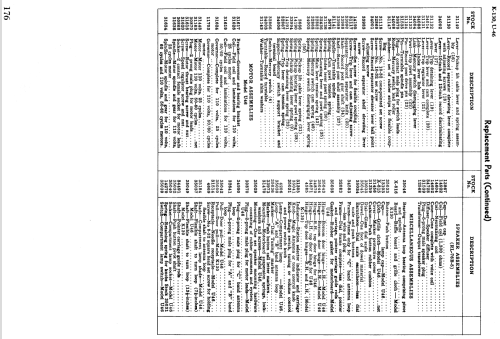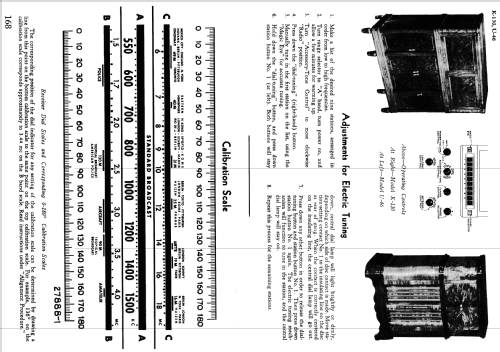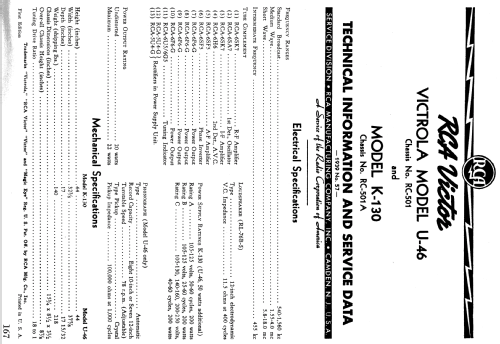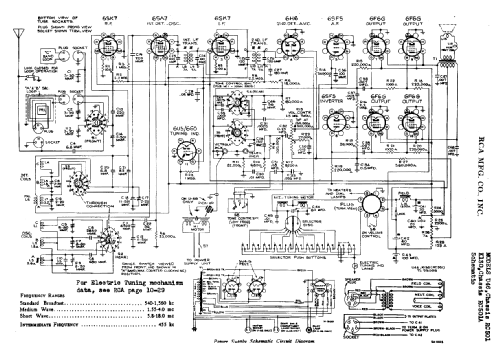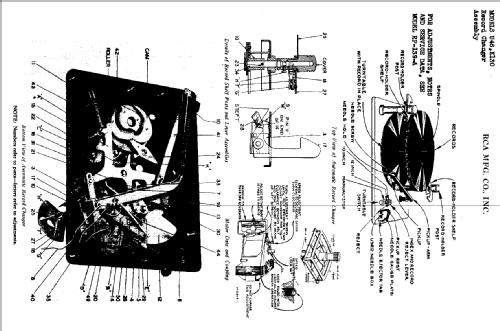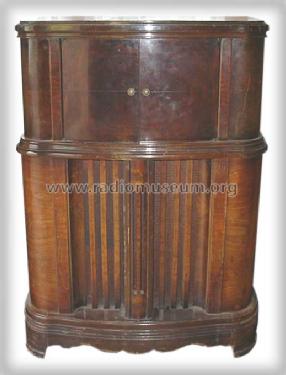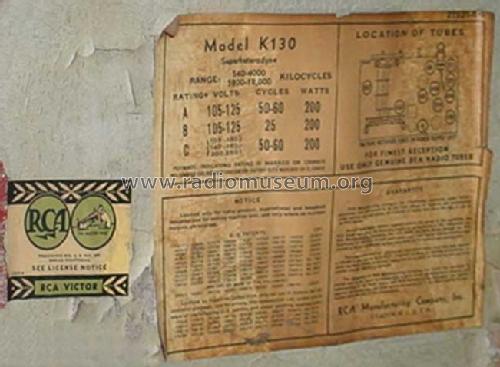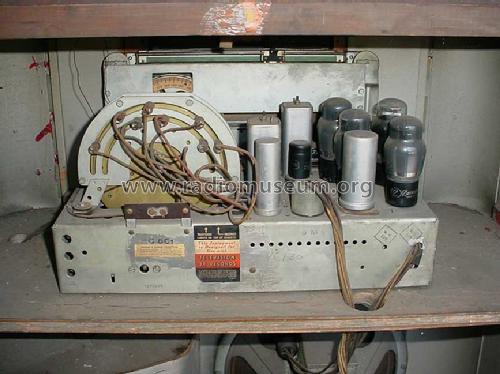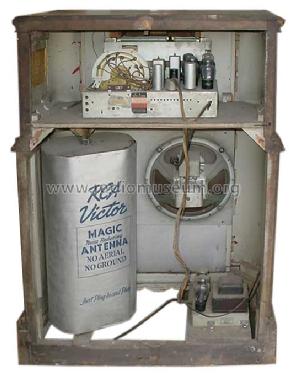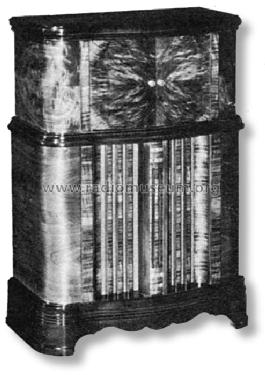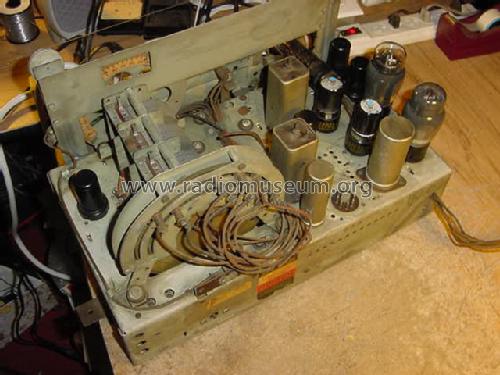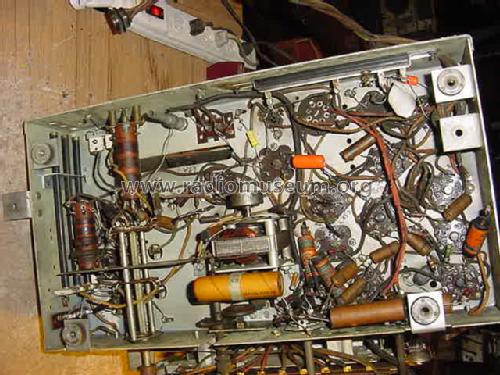K130 Ch= RC-501A
RCA (RCA Victor Co. Inc.); New York (NY)
- Country
- United States of America (USA)
- Manufacturer / Brand
- RCA (RCA Victor Co. Inc.); New York (NY)
- Year
- 1939
- Category
- Broadcast Receiver - or past WW2 Tuner
- Radiomuseum.org ID
- 54301
-
- alternative name: RCA Manufacturing || Victor Talking Machine
Click on the schematic thumbnail to request the schematic as a free document.
- Number of Tubes
- 13
- Main principle
- Superhet with RF-stage; ZF/IF 455 kHz
- Wave bands
- Broadcast plus 2 Short Wave bands.
- Power type and voltage
- Alternating Current supply (AC)
- Loudspeaker
- Electro Magnetic Dynamic LS (moving-coil with field excitation coil) / Ø 12 inch = 30.5 cm
- Power out
- 20 W (unknown quality)
- Material
- Wooden case
- from Radiomuseum.org
- Model: K130 Ch= RC-501A - RCA RCA Victor Co. Inc.; New
- Shape
- Console with Push Buttons.
- Dimensions (WHD)
- 32.375 x 44 x 17 inch / 822 x 1118 x 432 mm
- Notes
- Doors. Motorized tuning.
This model has 3 power supply ratings:
Rating A...105-125V, 50-60 Cycles
Rating B...105-125V, 25-60 Cycles
Rating C...105-130;140-160;200-250V, 40-60 Cycles
- Net weight (2.2 lb = 1 kg)
- 63.56 lb (63 lb 9 oz) / 28.856 kg
- Price in first year of sale
- 159.95 USD
- External source of data
- Ernst Erb
- Source of data
- The Radio Collector's Directory and Price Guide 1921 - 1965
- Circuit diagram reference
- Rider's Perpetual, Volume 11 = ca. 1940 and before
- Mentioned in
- Collector's Guide to Antique Radios 4. Edition
- Literature/Schematics (1)
- Pre-War Consoles
- Literature/Schematics (2)
- RCA Victor Service Notes "Red Book" Series
- Other Models
-
Here you find 5134 models, 3237 with images and 4174 with schematics for wireless sets etc. In French: TSF for Télégraphie sans fil.
All listed radios etc. from RCA (RCA Victor Co. Inc.); New York (NY)
Forum contributions about this model: RCA RCA Victor Co.: K130 Ch= RC-501A
Threads: 1 | Posts: 1
Some tips for repairing the motorized tuning system on the RCA K130 and other similar models:
First I had to replace the AC motor drive capacitor, which is a 60 uF 24 VAC nonpolarized electrolytic capacitor. I used back-to-back (the two + ends connected) polarized electrolytic capacitors, first trying two 50 uF 50 VDC capacitors, and then two 100 uF 50 VDC capacitors. The two 100 uF capacitors provided better motor torque, so I went with those.
Although it worked OK without them, I also added 1N4007 diodes across each capacitor to prevent any reverse polarity voltage from damaging the caps. This might extend the life of the replacement capacitors.
If the motor runs a long time (more than a minute -- much longer than needed for the tuning to operate), the caps start to get a little warm, but they seem to be holding up just fine. The original cap is marked "intermittent usage," so I imagine these replacement caps have similar capability.
Also found that the rubber drive "wheel" on the motor shaft was hard as a rock and would not grip its mating metal wheel. Simply using the spinning motor shaft itself as a lathe with a little knife blade, I turned down the rubber to remove about half of it, and exposing the end of the metal shaft. Then I glued a plain rubber grommet to the remaining hard rubber and metal shaft with cyanoacrylate glue ("Super Glue," which sticks super well to rubber!). It works really well, with quiet, smooth operation, and plenty of torque transfer. Very simple fix for an otherwise difficult to obtain part.
The insulation on the two wires connected to the rotating split plate on the rear of the tuning capacitor was in bad shape, so I replaced those wires with modern very finely stranded (highly flexible) wire. This should hold up well for many years.
After these fixes, the motorized tuning system works perfectly.
Tom
Thomas Albrecht, 12.Mar.12




